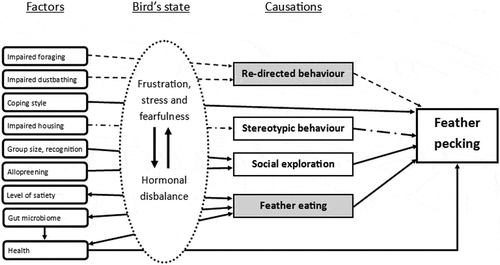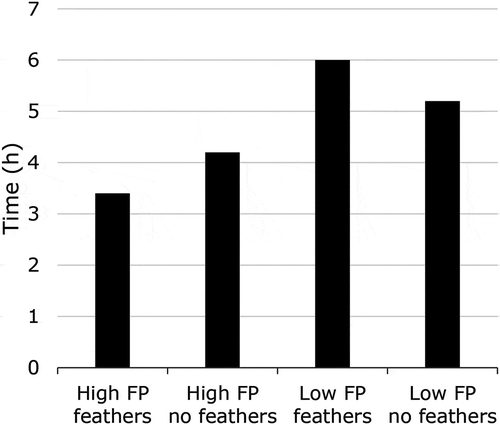Figures & data
Table 1. Prevalence of feather pecking (FP), severe feather pecking (SFP), gentle feather pecking (GFP) and plumage damage (PD) since 1999 of beak trimmed (Y), intact (N) and trimming unknown (U) flocks.
Figure 1. Overview of possible causations of feather pecking and the factors that influence the causations. Arrows indicate influences. Striped arrows and striped dotted arrow show connections within a hypotheses. Causations highlighted in grey are mostly related to nutrition.

Figure 2. The time when 50% of the plateau level of TiO2 excretion was reached (p < 0.05): FP = feather pecking, feathers = access to feathers, no feathers = no access to feathers. Adapted from Harlander-Matauschek et al. (Citation2006).

Figure 3. Effect of lysine intake level (mg/hen/day) on mean cumulative feather score from 1 (completely featherless) to 4 (fully feathered) at five body areas: neck, back, vent, wings and breast, of laying hens fed different dietary lysine levels at 27 (black), 47 (striped) and 66 (dotted) weeks of age. Adapted from Kumar et al. (Citation2018).

